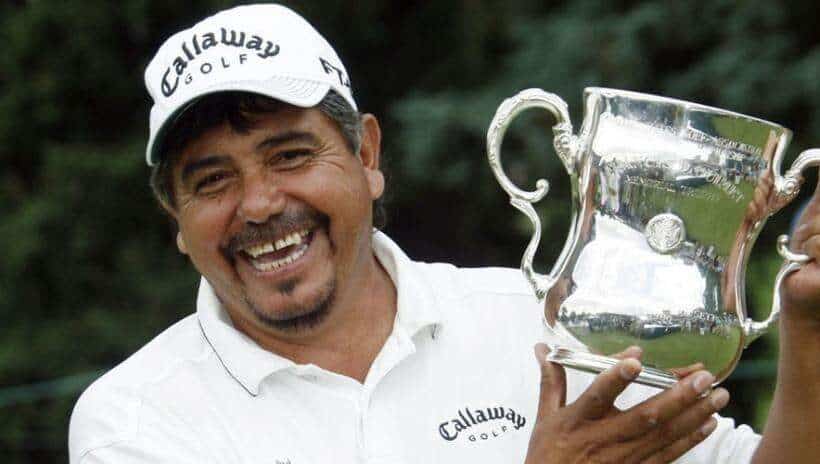One of Argentina’s greatest ever golfers Eduardo Romero has sadly passed away aged 67 after losing his battle with cancer.
Argentine golf mourns the loss of Eduardo Romero, one of the most emblematic players in our history and a symbol of the sport of Córdoba, where he emerged as a caddy. At 67 years old, a terminal illness put an end to the life of the mayor of Villa Allende, who in the last days of January had requested a license as a public official. “A few weeks ago I began a long treatment with ups and downs, which today forces me to give you the news that I never imagined and for which I never prepared,” he had communicated then.
Lovable, endearing, and winner. He reached the top at the local level by winning the Republic Open (1989), he shone on the European Tour (8 titles in 383 tournaments, with total earnings of 7.5 million euros) and his career had a relaunch after 50 years when he won two Majors of the Champions Tour of the United States, the veterans circuit. He was left with the thorn of a victory on the PGA Tour, a tour in which, unlike his countryman and friend Angel Cabrera, he was unable to gain a foothold, but his career was nuanced by great moments within the elite of the Old Continent.
He was an athlete genetically prepared for golf. He was helped by being born into a family of golfers, in the heart of the El Cóndor neighborhood of Villa Allende, where golf is more important than soccer. It was his father, Don Alejo Romero, who instilled perseverance and sacrifice in him as a child to obtain achievements. Under his tutelage she spent countless hours practicing; he used anything that looked like a golf club to hit stones, sticks that fell from branches, corks… “If the cork comes out right, the ball will come out right too,” he advised.
Eduardo Romero could not crown his great performance on the Scottish courts with the title.
From a very young age, he worked as a caddy at the Córdoba Golf Club, and not one ever changed his natural swing, a trademark that took him far on international tours. From his mother, Doña Delia “Lola” Nieva, he learned humility, respect, and perseverance. From her and her de ella father de ella he inherited not being spiteful. “I understood chivalry, people skills, respect for others, the value of words, of honesty. For me, golf is also a philosophy of life”, he reflected in his autobiographical book “El Gato”, published by RaízDeDos.
At the age of 12, he carried the sticks for José Calixto Yáñez. When this fan was not playing, he slowed him down the bag; thus, practicing on the course as a caddy was his happiest moment of him and he enjoyed it to the fullest, testing shots and throwing balls until the sun went down; thus it molded the nature of player of him. “I was polishing those sticks of Yáñez during the three kilometers between the club and my house in El Cóndor. And when he came to my home, he kept handing them the flannel. He ate and kept the bag insight as if it could escape from me in the slightest distraction ”, said the Cat, who then pulled him until his hands were red, so much so that at night he submerged them in ice to deflate them.
While his contraction to golf remained intact, at the age of 15 his father took him to work in the carpentry shop at Coco Mazza. Concerned about his job future, he wanted him to learn another trade. One day, Alejo Romero asked the owner of the business: “How is the boy doing?” “Who, Eduardo?”, replied Mazza, who finished: “What do I know, if he splits every day to play golf!“.
His father looked for a way for him not to dedicate himself to this sport, but he understood that he carried it in his soul. Deep down, he went out of his way to have a golfer son. At a certain point, he challenged him: “If you want to play, you are going to play, but seriously. Until your hands bleed.” That’s how he got him to throw and carry balls. It was located in the carob tree on the club’s course, between holes 1 and 18. In ‘El Árbol de Romero’, as the locals call it. From there, he would throw two hundred balls, go out to pick them up, and hit another two hundred again. “I abandoned the street, I stopped going around slingshots, killing birds for fun, and from then on I dedicated myself to this sport, which was also learning life”.

